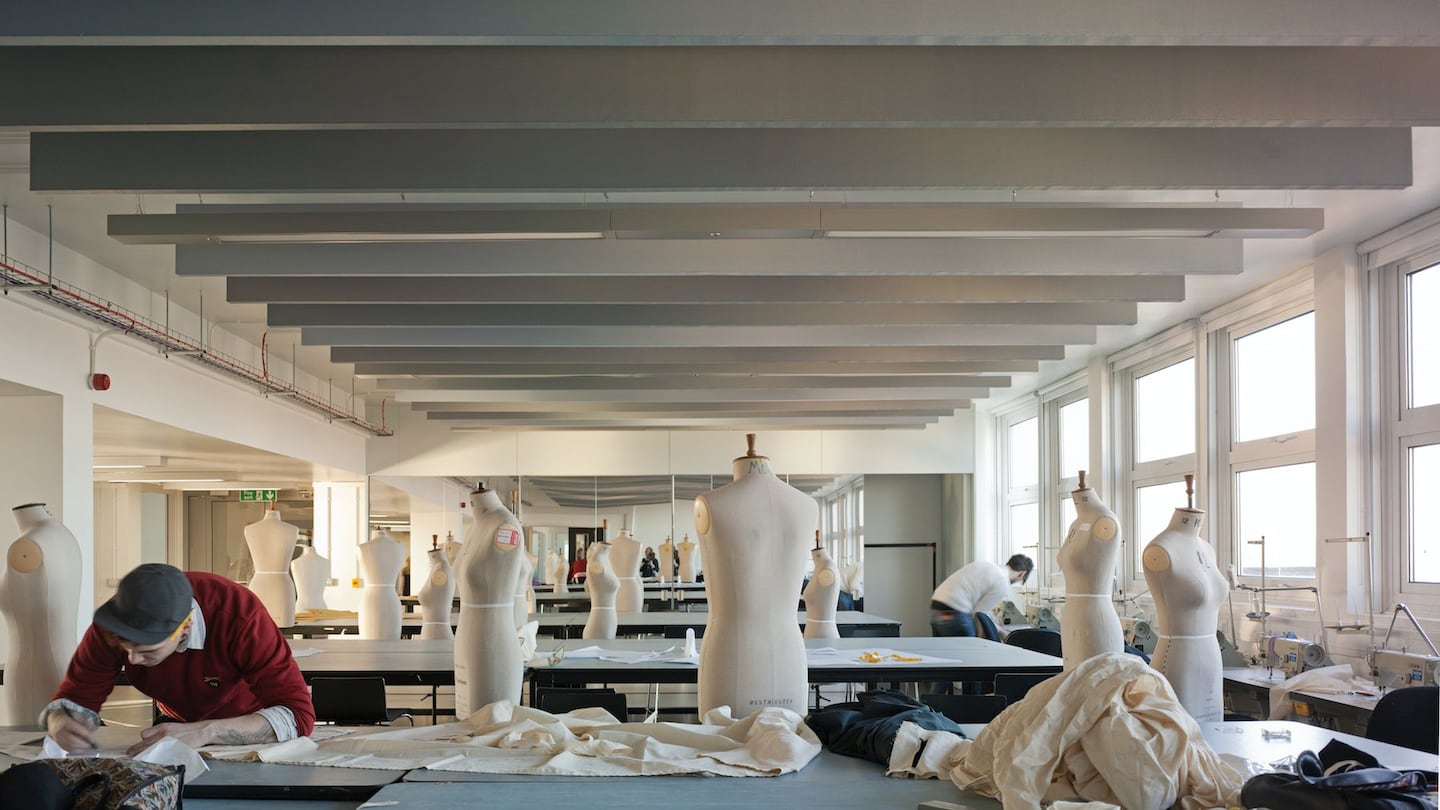
The Business of Fashion
Agenda-setting intelligence, analysis and advice for the global fashion community.

Agenda-setting intelligence, analysis and advice for the global fashion community.

LONDON, United Kingdom — As the number of fashion and design school graduates continues to rise, it's more challenging than ever to secure a position at a prestigious fashion house. A stellar creative portfolio — one that effectively communicates creativity and innovation — gives applicants a significant advantage over the competition.
While students at fashion schools often focus on the final show at the end of every academic year, “the portfolio is so important because ultimately, it’s going to show every skill and it will get you the job,” said Hywel Davies, programme director of fashion at Central Saint Martins. A good creative portfolio includes everything from initial sketches to printmaking and written work, and should provide a multi-dimensional glimpse into a designer’s skillset. It should also showcase additional expertise, such as business knowledge and coding experience, which have become increasingly sought-after by employers.
BoF spoke to educators and industry insiders from some of the world’s most renowned fashion schools and brands to discover how to make a creative portfolio stand out.
1. Show diversity and market awareness
Hywel Davies, programme director of fashion at Central Saint Martins
ADVERTISEMENT
"Students need to develop their own signature or design handwriting, and they need to be clear about who their collection is aimed at and what their market is. When design students are applying for jobs, what they need to show in their portfolio is a variety of work. It shouldn’t just be about their personal collections.
They need to be able to show diversity. They can have a vision for their collection, but they [need to demonstrate they] can design collections for Chloé or J.W. Anderson. Different brands have different aesthetics. [Students] need a rich awareness of the industry, and they need to show that they’re able to engage with other markets and other customers."
2. Develop a narrative
Nicoline Dalgaard, studio assistant at Marques' Almeida
"A successful, creative portfolio is one where the reader is being navigated through the pages in a clear and thoughtful way. Essentially, a good portfolio is a narrated story about your key skills and a lot of graduates forget this. They believe that it’s important to show that they can do everything, whether it’s developing original concepts, research, mood boards, patternmaking and draping, technical flats, final product pictures styled in a photoshoot or fashion illustrations. But actually, this approach makes it very un-nuanced and boring for the reader.
It shows me that you haven’t considered your design profile and how you stand out from the crowd by trying to answer the crucial question: why should we choose you? I believe that there’s two good ways of making a creative portfolio: One where you divide your portfolio into projects and one where you divide your portfolio into skills. I’d love to see more examples of the latter."
3. Include non-traditional skills
Marie Genevieve Cyr, assistant professor of fashion design at Parsons
"Brands will be looking at very different types of work depending on their own vision and personality. While some brands might be looking at experience, aesthetics or the ability to multi-task, others may be looking for technical CAD [computer aided design] and industry experience. The 21st century has seen many new brands emerging, giving more options for graduates.
Students are developing more unique or non-traditional skills. By learning a variety of techniques, they can produce a variety of outcomes. They [should] challenge what fashion and what a collection can be, creating not only garments but collections of textiles, videos, installation, systems, fine art, furniture or interiors. [Designers should] consider graduate jobs beyond the traditional 'fashion designer' positions, such as textile designer, a role in virtual reality, creative pattern cutter, technical designer or print designer."
ADVERTISEMENT
4. Communicate clearly and concisely
Rora Chow, studio manager at Rejina Pyo
"Regardless of their personal style, [a good creative portfolio should present] a clear communication of ideas and how [the designer] executed it from research to the final product. It’s also a good indication of how they speak through design.
The misconception that people have about their portfolio is that it needs to show every single skill. The three big things you need to show are: research, development and the final product. And if they can clearly show that within five pages, that’s enough already. They don’t need to show each project, but maybe two of their best."
5. Demonstrate originality
Aurora James, founder of Brother Vellies
"Originality and a strong sense of creative self is incredibly important. When I first started designing shoes, I think people thought I was a little out of my mind. But I stuck with my creative vision and made a brand out of it because I was clear in who I was. I like to see people with that same sort of creative clarity, focus and originality.
[Applicants make the mistake of] trying to emulate some of the ideas we have had in the past, which always feels a little stale to me. I’m looking at concepts for the future; I don’t like seeing old work. As an entrepreneurial thinker I like to be around people who can wear multiple hats. I have a hard time relating to people who only like to stay in one lane, in general."
Related Articles
[ Will Going to Fashion School Actually Get You a Job?Opens in new window ]
[ Fashion Needs a More Robust Approach to Technology EducationOpens in new window ]
[ How to Get Into the Best Fashion SchoolsOpens in new window ]

Discover the most exciting career opportunities now available on BoF Careers — including jobs from Gucci, Simone Rocha and Bloomingdale’s.
BoF spoke to HR executives and talent experts at Alexander McQueen, On and Deckers Brands — global employers currently recruiting on BoF Careers — to understand what skills are most relevant to the fashion industry and how to upskill in them in the workplace.
The nature of working in retail is changing at pace as the purpose of stores continues to evolve. BoF Careers examines how in-store employees can hone and develop their skill sets for success in retail or its adjacent industries, sharing expertise from retail leaders and fashion executives who began their careers on the shop floor.
A tailored recruitment service offering specialist support to secure top-tier talent for your open roles — from entry-level to C-suite positions across fashion, retail, luxury and beauty.